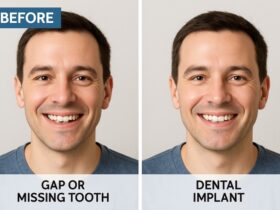Key Takeaways:
- Advancements in digital pathology and artificial intelligence are revolutionizing dermatopathology.
- Non-invasive imaging techniques are enhancing diagnostic accuracy and patient comfort.
- Teledermatopathology is expanding access to specialized care globally.
- Ongoing research and technological integration are shaping the future of skin disease diagnosis and treatment.
Table of Contents
- Digital Pathology and Artificial Intelligence
- Non-Invasive Imaging Techniques
- Teledermatopathology
- Molecular Diagnostics and Personalized Medicine
- Artificial Intelligence in Dermatopathology
Dermatopathology continues to evolve with advancements in diagnostic technology, molecular testing, and artificial intelligence (AI). These developments are shaping a future where skin disorder diagnosis becomes faster, more accurate, and increasingly personalized. As the demand for dermatologic evaluations grows, especially with rising rates of skin cancers and autoimmune conditions, the field must adapt to address both clinical complexity and patient needs.
Experts in the field, such as Bradley Bakotic, emphasize the importance of integrating new diagnostic tools with established practices. Innovations like digital pathology and AI-assisted image analysis are streamlining workflows and enhancing diagnostic precision. At the same time, collaboration between clinicians and pathologists remains essential to interpret emerging data and apply it meaningfully in patient care. This mix of technology and expert insight will probably shape the future of dermatopathology.
Digital Pathology and Artificial Intelligence
Digital pathology is converting traditional glass pathology slides into high-resolution digital images. This shift enables remote consultations, streamlined archiving, and collaborative diagnostics. Artificial intelligence has a profound impact here: by powering algorithms capable of recognizing subtle patterns and microscopic anomalies, AI enhances the speed and accuracy of dermatopathological diagnoses. AI-powered systems are now matching, and sometimes surpassing, human experts in tasks such as melanoma classification and identifying other skin cancers.
Non-Invasive Imaging Techniques
Non-invasive imaging innovations are changing how dermatopathologists evaluate skin disease. Tools like reflectance confocal microscopy (RCM) and optical coherence tomography (OCT) allow for detailed visualization of skin architecture without surgical biopsies. These live imaging approaches offer real-time, high-resolution diagnostics, particularly valuable in cosmetically sensitive areas or when frequent monitoring is warranted. These technologies are helping clinicians reduce unnecessary procedures, detect disease progression earlier, and improve patient experiences.
Teledermatopathology
Teledermatopathology uses digital slide technology to allow remote diagnostic consultations across distances. This method is a game-changer in rural or underserved areas, where access to expert dermatopathologists is often limited. Teledermatopathology encourages real-time collaboration, speeds up turnaround times, and increases diagnostic confidence for complex or difficult cases. Its importance was especially highlighted during the COVID-19 pandemic, when remote work and telehealth tools became vital for maintaining patient care.
Molecular Diagnostics and Personalized Medicine
Integrating molecular diagnostics marks a pivotal moment for personalized medicine in dermatopathology. Techniques such as fluorescence in situ hybridization (FISH) and next-generation sequencing (NGS) uncover genetic mutations responsible for particular skin diseases and cancers. This molecular insight allows for tailored treatments and a more accurate prognosis for each patient. In line with modern oncology trends, dermatopathologists can partner directly with treating physicians to match therapies based on genetic alterations, ultimately driving better clinical outcomes for patients worldwide.
Artificial Intelligence in Dermatopathology
AI continues gaining momentum in dermatopathology by assisting with routine tasks and challenging diagnoses. Deep learning models, particularly convolutional neural networks, analyze digital slide images for patterns associated with melanoma and other malignancies. These systems minimize human error, offer reproducible results, and efficiently triage workloads for pathologists. Nonetheless, the need for standardization and careful study persists; integrating AI safely and ethically demands ongoing partnership between clinicians and technologists. A thoughtful, collaborative approach can ensure AI supports medical judgment rather than replaces it.




